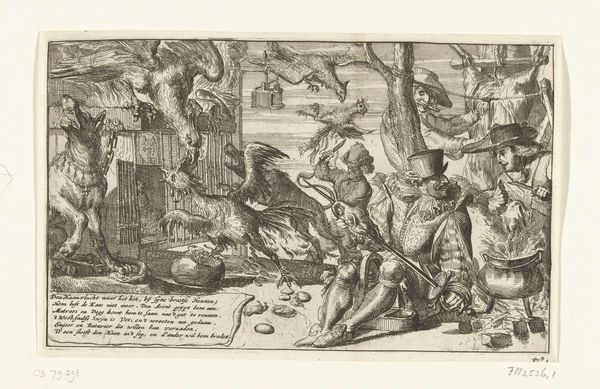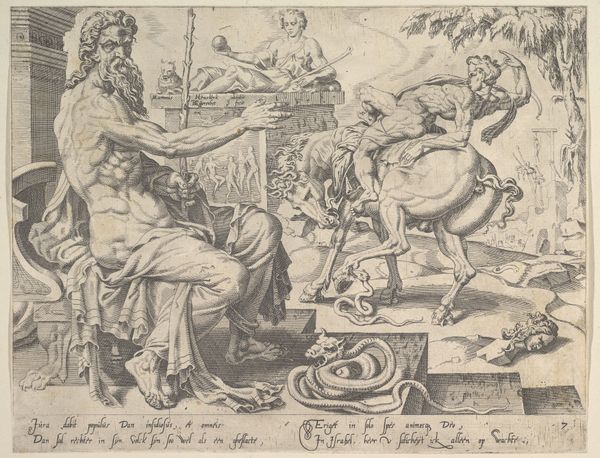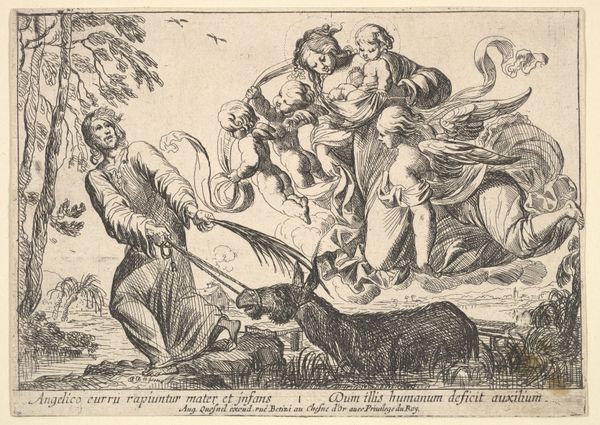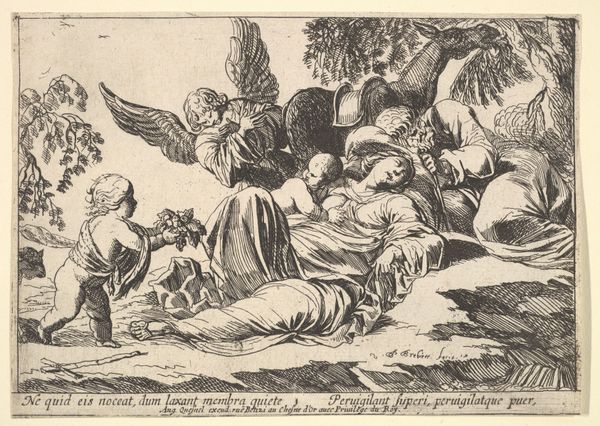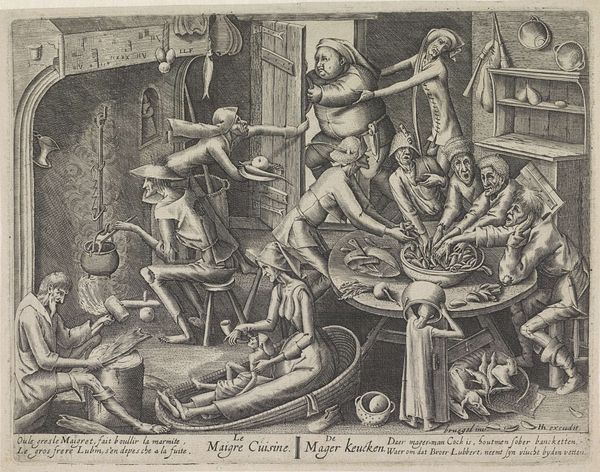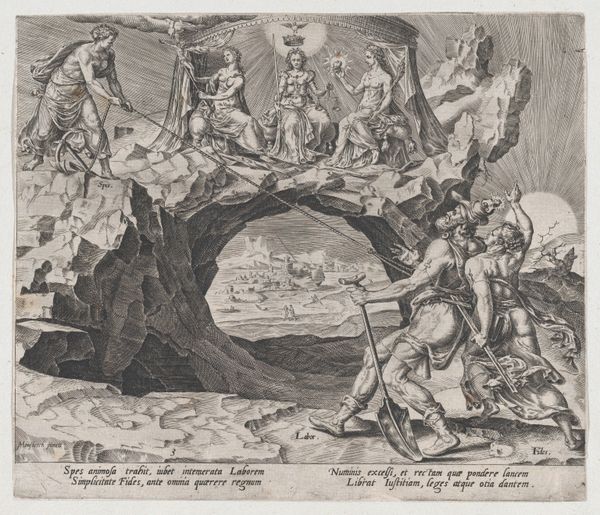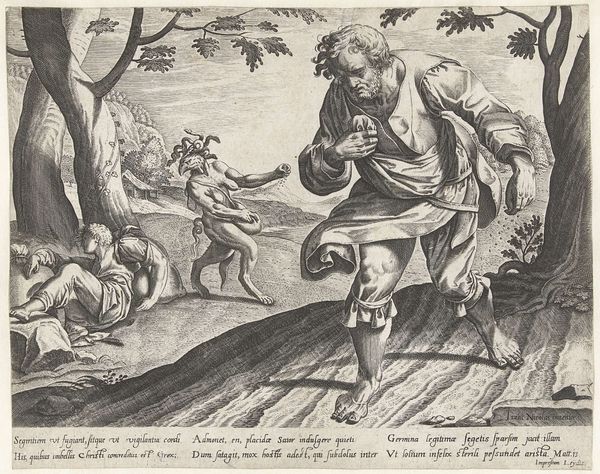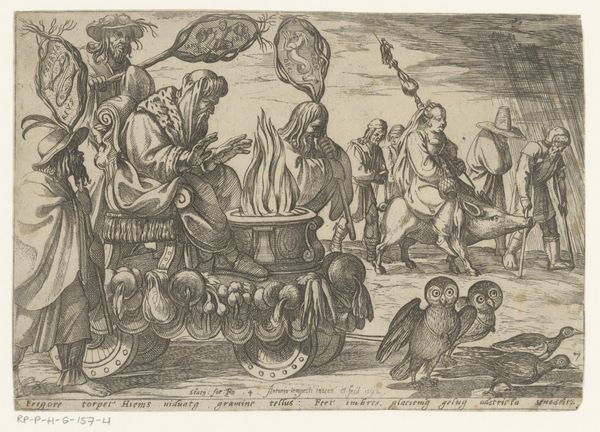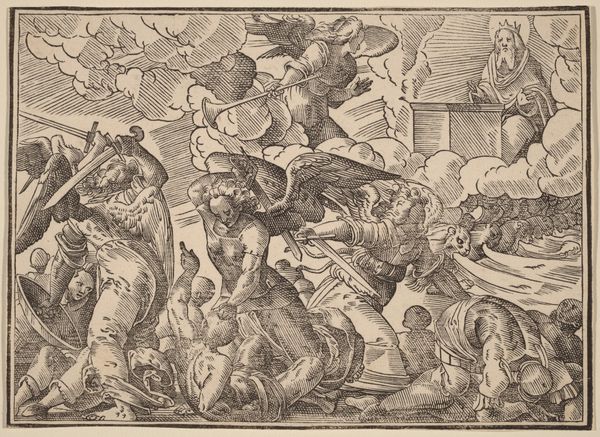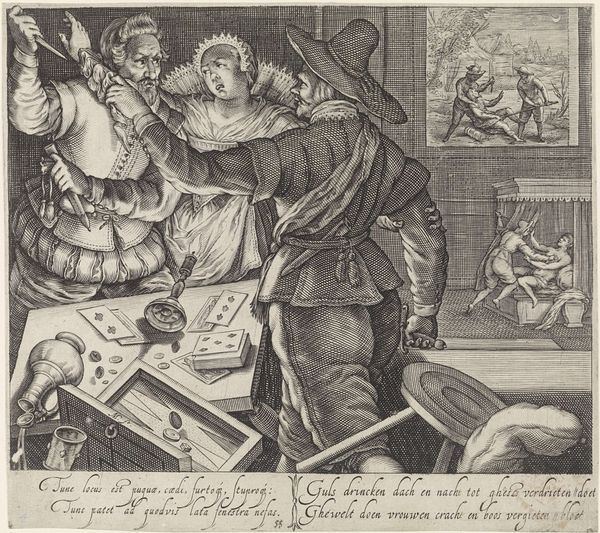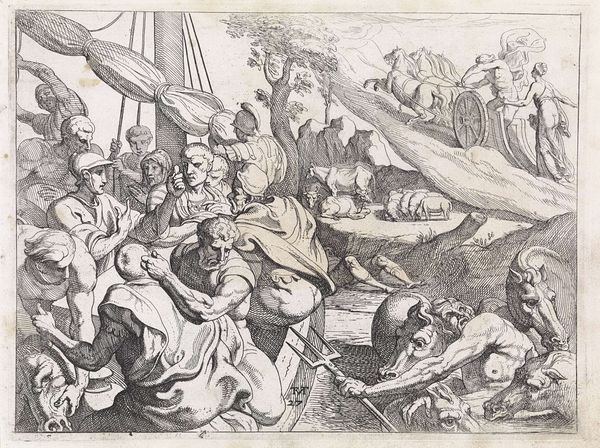
drawing, print, etching, ink, engraving
#
drawing
#
ink drawing
#
allegory
#
narrative-art
#
baroque
# print
#
pen sketch
#
etching
#
mannerism
#
figuration
#
vanitas
#
ink
#
history-painting
#
engraving
Dimensions: Plate: 6 1/2 × 8 9/16 in. (16.5 × 21.7 cm) Sheet: 6 7/8 × 8 7/8 in. (17.4 × 22.5 cm)
Copyright: Public Domain
Curator: Werner van den Valckert's engraving, “Old Couple and Death with Bagpipes,” created in 1612, presents us with a rather stark vision. What’s your initial response to it? Editor: My immediate reaction is one of profound discomfort. The grim scene, rendered in such sharp detail, evokes a palpable sense of dread and vulnerability in the face of mortality. Curator: Indeed. The etching is rife with vanitas symbols. We see the old couple confronted by a winged skeleton gleefully playing the bagpipes—an unsettling personification of Death. There are objects on the table – the discarded food, an overturned pitcher – suggesting earthly pleasures fading with age. Editor: And it hits hard because the piece is an uncompromising commentary on aging, and on how society disregards the elderly, doesn’t it? Look at the body language of the old couple. They are hunched and fragile, their clothes are drab, their expressions weary as they are physically and emotionally drained from their lifelong service in a youth-centric society. The piece underscores how precarious life feels as you face that erasure. Curator: Perhaps it is more universal than that. The imagery suggests something much deeper, tapping into a fear of aging. Bagpipes themselves can carry varying significance—celebratory in some contexts, funereal in others. Here, juxtaposed with Death, it’s undeniably a lament, or a danse macabre, that universal dance toward the grave. This resonates with Dutch genre painting of the period. Editor: But look closer at the artist's decisions. I cannot ignore the artist's intention and choice to emphasize class issues as an allegory to remind audiences about social injustice in 17th-century Netherlands society. The composition implicates all those who fail to consider the systemic disadvantages elderly citizens have to face, so perhaps Van den Valckert is suggesting this is the true cause of suffering. Curator: A compelling argument. The piece certainly doesn't shy away from depicting harsh realities and reminding the upper class about their misdeeds and indifference. But one could also argue that "Death playing music" is a metaphor deeply rooted in art and history and cultural representations of human morality, the ephemeral nature of pleasure, and inevitable fate, reminding everyone to lead a more honest life and make more moral choices. Editor: I can’t deny that it operates on those symbolic levels too. The beauty of art is exactly this multifaceted conversation. I walk away with a renewed appreciation for how art allows us to address inequalities but also remind ourselves that certain human experiences—mortality, aging—transcend class boundaries. Curator: I concur. It’s a sobering piece but not without its merits, inviting us to reconsider our perception and preconceived ideas.
Comments
No comments
Be the first to comment and join the conversation on the ultimate creative platform.
